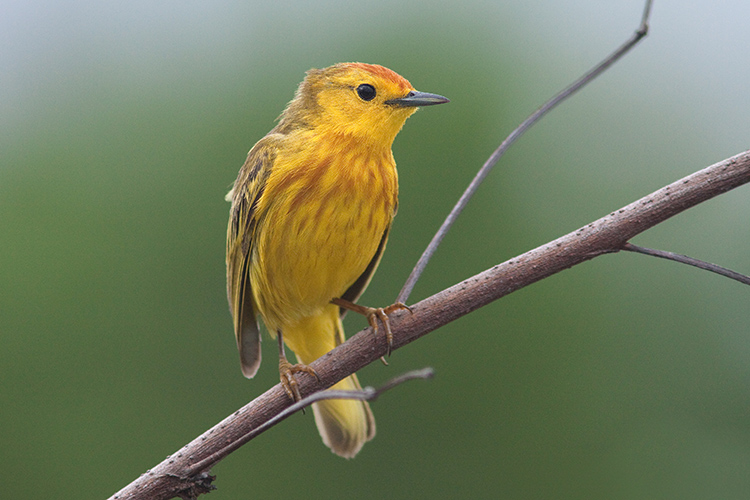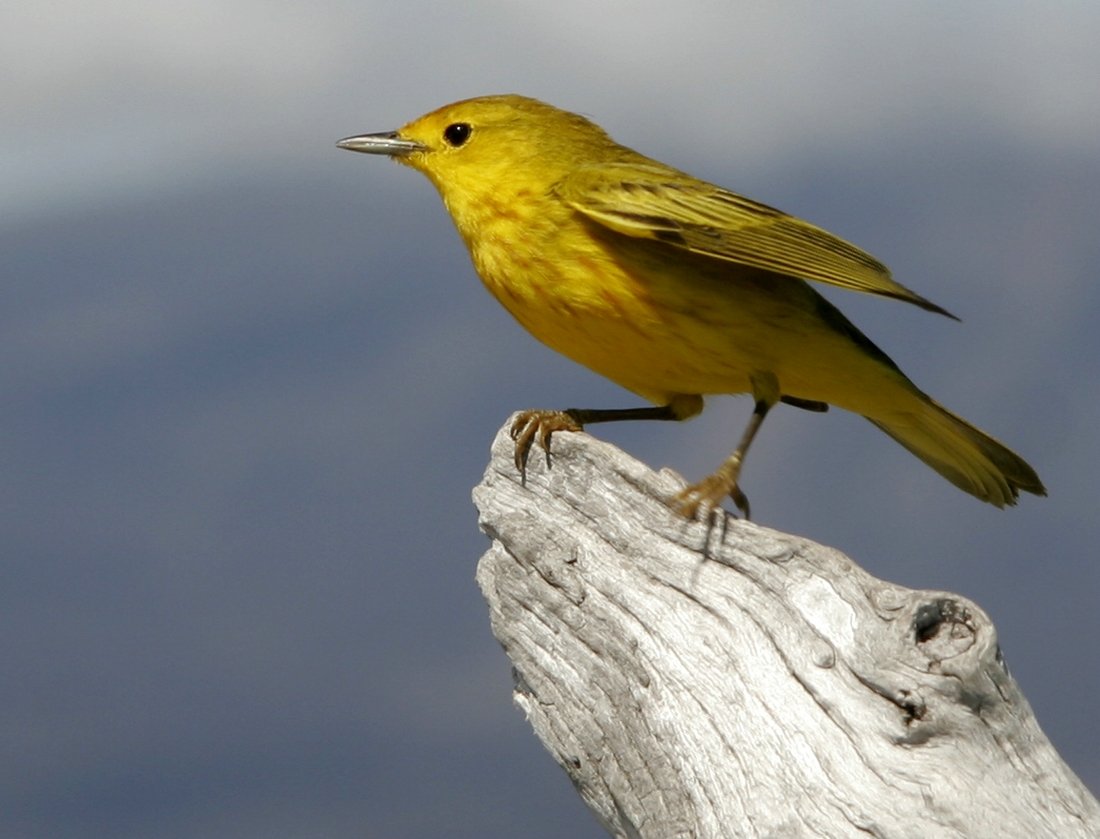Galapagos Species Database
The Galapagos Species Database shares the information about the species from our Natural History Collections.
Setophaga petechia aureola
Reinita Amarilla, Canario María, Yellow Warbler, Mangrove Warbler









The only bright yellow bird with a bright, sweet song. Together with the population from the Coco islands, it is considered a sub-species (Setophaga petechia aureola) characterized by the brown-reddish cap on it’s head. Genetic divergence is low. Probably colonized the archipelago less than 300 000 yrs ago.
Threats As a mainly insectivorous species, it may be affected by pesticide use and it is affected by Plasmodium and by the parasitic fly Philornis downsi that may cause heavy chick mortality.
Domain
Eukaryota
Kingdom
Animalia
Phylum
Chordata
Class
Aves
Order
Passeriformes
Family
Parulidae
Genus
Setophaga
Species
petechia
Subspecies
aureola
Taxon category: Species with Infraspecific Taxa
Syn.: Dendroica petechia aureola (Gould, 1839); Sylvicola aureola Gould, 1841; Dendroica aureola Ridgway, 1890; Dendroica petechia Linnaeus, 1766; Dendroica petechia galapagoensis Sundevall 1869.
Taxon origin: Endemic
Preference for an altitude zone in Galapagos: Coastal zonera - humid zone
Trophic role: Carnivorous
Reproduction mode: Exclusively sexual
Map of specimen collection localities or observation records for this species in our collections database.
Distribution: Present on all Islands from the shoreline up to the highest points.
- Wiedenfeld, D.A. (2006) Aves, the Galapagos Islands, Ecuador. Check List 2006 2(2): 1-27.
- Jiménez-Uzcátegui, G. Milstead, B., Márquez, C., Zabala, J., Buitrón, P., Llerena, A., et al. (2007) Galapagos vertebrates: endangered status and conservation actions. Galapagos Report 2006–2007. Charles Darwin Foundation, Puerto Ayora, p. 104–110.
- Harris, M.P. (1973) The Galápagos avifauna. Condor 75(3): 265-278.
- Salvin, O. (1876) On the avifauna of the Galápagos Archipelago. Transactions of the Zoological Society of London 9: 447-510.
- Sundevall, C.J. (1871) On birds from the Galápagos Islands. Proceedings of the Zoological Society of London 1871: 124-129.
- Castro, I. Phillips, A. (1996) A Guide to the Birds of the Galapagos Islands. Christopher Helm Publishers Ltd., London.
- Fessl, B. Tebbich, S. (2002) Philornis downsi - a recently discovered parasite on the Galápagos archipelago - a threat to Darwin's finches? Ibis 144: 445-451.
- Thiel, T. Whiteman, N.K., Tirapé, A., Baquero, M. I., Cedeño, V., Walsh, T., Jiménez-Uzcátegui, G. & Parker, P.G. (2005) Characterization of canary pox-like viruses infecting endemic birds in the Galapagos Islands. Journal of Wildlife Diseases 41(2): 342-353.
- Swarth, H.S. (1931) The Avifauna of the Galapagos Islands. Occ. Pap. Calif. Acad. Sci. 18: 1-299.
- Fessl, B. Couri, M.S. & Tebbich, S. (2001) Philornis downsi Dodge & Aitken, new to the Galapagos Islands (Diptera, Muscidae). Studia Dipterologic 8: 317-322.
- Kleindorfer, S. Dudaniec, R.Y. (2006) Increasing prevalence of avian poxvirus in Darwin’s finches and its effect on male pairing success. Journal of Avian Biology 37: 69-76.
- Jiménez-Uzcátegui, G. Betancourt, F. (2008) Avifauna vs automotores. Informe Galápagos 2007-2008. FCD, PNG & INGALA. Puerto Ayora, Ecuador. p. 111–114.
- Hickin, N. (1979) Animal life of the Galapagos. Ferundune Books, Faringdon, U.K., 236 pp.
- Alatalo, R. V. (1982) Bird Species Distributions in the Galapagos, Ecuador, and Other Archipelagoes: Competition Or Chance?. Ecology 63 (4): 881-887
- Chaves, J.A. Parker, P. G., Smith, T.B. (2012) Origin and population history of a recent colonizer, the yellow warbler in Galapagos and Cocos Islands J . Evol. Biol. 25: 509-521
- Browne, R. Collins, E. & Anderson, D. (2008) Genetic structure of Galapagos populations of the Yellow Warbler. The Condor 110:549-553
- Guerrero, A. Tye, A. (2011) Native and introduced birds of Galapagos as dispersers of native and introduced plants. Ornitología Neotropical 22:207-217.
- Levin, I.I. Zwiers, P., Deem, S., Geest, E., Higashiguchi, J., Jimenez-Uzcategui, G., Kim, D., Morton, J., Perlut, N., Iezhova, T., Jime, G., Renfrew, R., Sari, E., Valkiunas, G. & Parker, P. (2013) Multiple Lineages of Avian Malaria Parasites (Plasmodium) in the Galapagos Islands and Evidence for Arrival via Migratory Birds. Conservation Biology doi 10.1111/cobi.12127.
- Freile, J.F. Santander, T., Jiménez-Uzcátegui, G., Carrasco, L., Cisneros-Heredia, D., Guevara, E., Sánchez-Nivicela, M., Tinoco, B. (2019) Lista Roja de las aves del Ecuador Quito, Ecuador. 97 pp.



Feeding type: Insectivorous